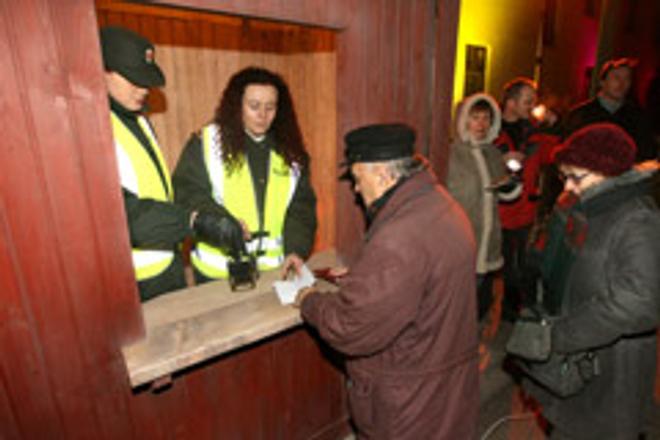A t midnight on December 21, Interior Minister Robert Kaliňák and the Mayor of Schengen in Luxembourg, Roger Weber, lifted the barrier at the Slovak-Austrian border between Bratislava and Berg to the strains of Beethoven’s Ode to Joy. Slovakia thereby became a member of the Schengen zone, a passport-free travel area within the EU. Several thousand people turned out to celebrate the event.
During the hours leading up to the border opening, people lined up to receive the last Bratislava-Berg stamps in their passports (above), with Kaliňák doing some of the stamping. Similar festivities took place at border crossings between Slovakia and the Czech, Hungarian, and Polish republics.
Border controls were abolished at midnight from December 21 to 22 as the Czech Republic, Estonia, Hungary, Latvia, Lithuania, Poland, Slovakia and Slovenia, as well as the Mediterranean island of Malta, joined the 15 nations already in the Schengen zone. The huge expansion means that the population of the free-movement zone has reached 400 million.



 (source: ĆTK)
(source: ĆTK)